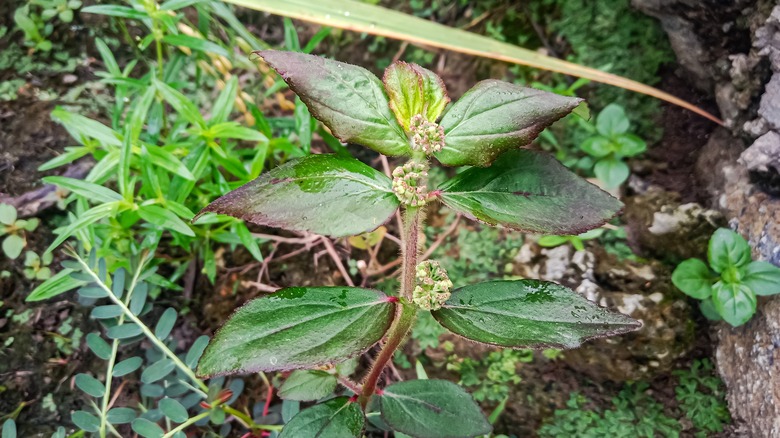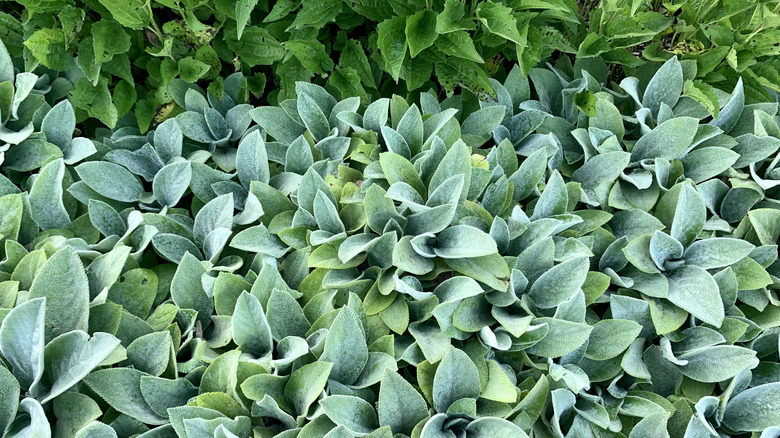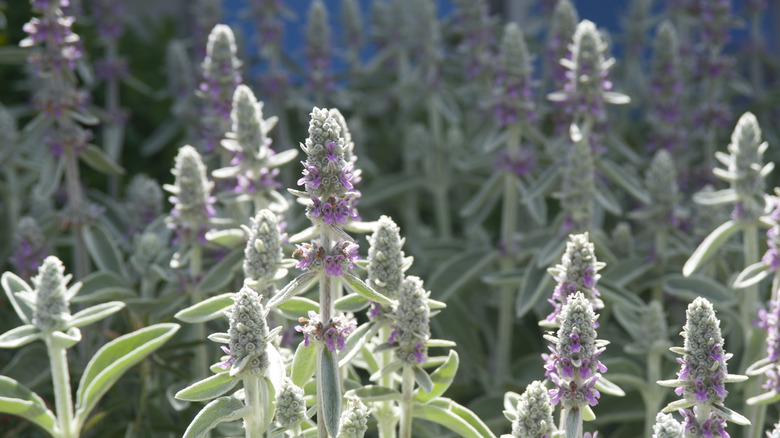Weeds Don't Stand A Chance Against This Common Ground Cover Plant
Gardening can be a healthy hobby that connects us to the natural world. However, it isn't all roses and champagne. One of the most infuriating tests to our patience takes place when weeds pop up. There is nothing like that sinking feeling when you have created the perfect garden design, only to wake up one morning and see that weeds have run rampant over your hard work. There are many ways to control common weeds. Pulling them all by hand can feel backbreaking, and using chemicals is not the best choice in many situations. But groundcover plants can save the day by preventing weeds, and one of the best groundcovers is called lamb's ear.
Lamb's ear is a low, fast-growing groundcover that tolerates a wide range of soil and sun conditions. It has beautiful gray, soft, fuzzy leaves that add texture to any outdoor space. It blooms with stalks of purple blooms in summer, adding charm to your garden. And it is very easy to grow.
Why lamb's ear prevents weeds from growing
Weeds are quick to take advantage of any open space where they can get enough sun and water to grow between plants — which means they steal nutrients and moisture from plants you spent good money on. The best way to get rid of weeds naturally is to not allow them that opportunity by crowding them out ahead of time.
Lamb's ear grows very quickly, giving weeds less time to get established. It spreads with roots both underground and wherever a leaf node might touch the soil. The tight mat of roots that forms helps prevent weeds from getting a foothold by not allowing them the space to sprout. Lamb's ear also shades the ground to prevent weed seeds from getting the sunlight they need to flourish. It's so effective as a ground cover that you must be careful not to allow it to creep into areas where it might smother out some of your garden plants. It works great on a sunny slope where it might be difficult to weed.
How to grow lamb's ear
Lamb's ear makes a great plant for beginning gardeners because it's low maintenance. Most varieties grow less than 18 inches tall, and depending on variety, can spread from 1 to 3 feet wide. While they're tolerant of poor soil, they can't handle soil that doesn't drain well. Too much water can cause root rot and decaying leaves. Deer and rabbits tend to avoid lamb's ear, and it's drought-tolerant once established. Lamb's ear is semi-evergreen in most areas — it prefers full sun, but afternoon shade is appreciated during hot summers.
And for wildlife lovers, the late spring and summer flowers attract bees and butterflies. Some gardeners suggest if you cut off the flowers as they appear, it creates a more compact plant with more attractive leaves. If you are looking for a low-growing variety without having to deal with the flowering, according to the University of Wisconsin Dodge County Extension, the variety "silver carpet" is a great bet.


